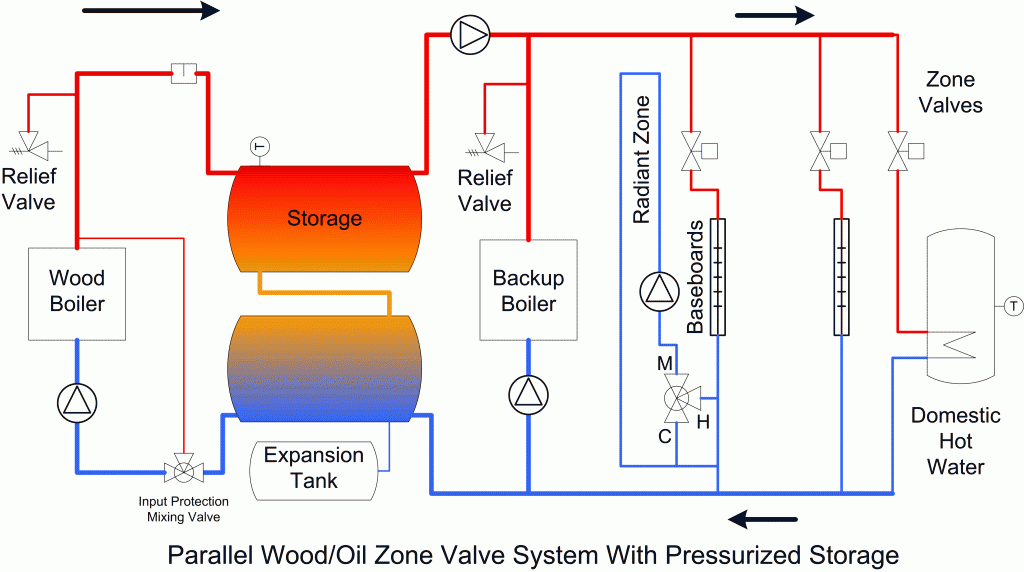By George Harvey
Here is a question for you. What started with a design for wood-burning boiler, is a high-tech industrial grade controller, is in every way a Vermont product, and can help with cleaning equipment in a dairy barn? I bet you could not guess.
Vermont Energy Control Systems (VECS) was built upon the imaginations of two fascinating Vermonters, Ralph Shepard and Bill Kuhns. Both have wide-ranging abilities. Ralph Shepard’s background includes blacksmithing and flying jet aircraft. Bill Kuhns has spent time with computer design, woodworking, and architecture. The eclectic set of abilities almost says, “Made in Vermont.”
VECS started with a home project of Bill’s, to control a wood-burning boiler. Bill quickly realized that controlling the boiler required input from the house, telling it what temperatures were and what temperatures were desired. This, in turn, required integrating the boiler with other equipment that had effects on the house’s heat, a list of systems that grew to include backup heat, solar panels, water heating for domestic use, a hot tub, thermal storage in a large tank, and more.
When Ralph Shepard saw what Bill was doing, he was quickly motivated to participate. Ralph added management and promotional skills to Ralph’s design and manufacturing abilities. And so VECS came into being, and with it, a remarkable computer called VESTA.
VESTA is not the sort of computer an ordinary person would want to use at home to manage email and pay bills. It is, however, the sort of thing an ordinary person would want to use at home to manage the home itself. Its equipment-controlling abilities are impressive, its interface is familiar, and its price is affordable, at less than $1000.
VESTA has inputs and outputs connecting to the real world. It can acquire data on temperature, humidity, or just about anything else that can be measured, and it can take in data from a large number of different sensors simultaneously.
Once gathered, the data can be analyzed to determine what is to be done with it. The initial use of VESTA may, in fact, be simply to find out what is going on, so a system to control and maintain it can be designed.
VESTA can be programmed to control many kinds of equipment from heaters or coolers to communications devices, motors, and alarms. In fact, VESTA can be used on all sorts of stationary equipment.
An example of the system is Bill Kuhns’ household energy design, which was mentioned earlier. Perhaps one day soon it will be so pervasively used it will be taken for granted. But until then, it is the sort of thing an energy-conscious homebody might dream of.
Another example of a use for the same VESTA computer is to control a utility system combining gasification, electric generation, and using residual heat to heat one or more buildings. A gasification system alone requires careful control, balancing temperature, air flow, and gas content, to keep it free of particulates and other pollutants, while delivering gas with optimal chemical properties to the combustion unit of the generator. The generator set has to be managed for optimal performance, including both quality of power generated and emissions. The residual heat has to be distributed to the points in the system where it is best put, with consideration given to other possible heaters that might supply heat.
The most fascinating example system is, perhaps, one that VECS is working on with the Vermont Technical College, managing energy in a dairy barn. The VECS-VTC system is in its beginning stages of set-up. Data is being analyzed to see where controls can be put for best management. Then, the management operations will be integrated, and the whole put into use.
It is easy to imagine a system that operates refrigerating equipment to keep milk cool, and uses the heat it produces for a house or office. The VECS-VTC operation will go way beyond that, however. For example, it will extract the cows’ body heat that is residual in the milk, cooling the milk as it does, and use the heat to sterilize dairy equipment. That is just one example; all the heat, cooling, and refrigeration demands of the barn are monitored and managed.
When asked what he most wants to tell people, Ralph said, “I want people to know we have a company in Vermont that developed a product to manage integration of alternative and reusable energy, from diverse sources, by tracking data and fine-tuning operations, based on their performance histories.”
The VECS website is www.VECS.org. More information can be found at www.nofossil.org.









Leave a Reply